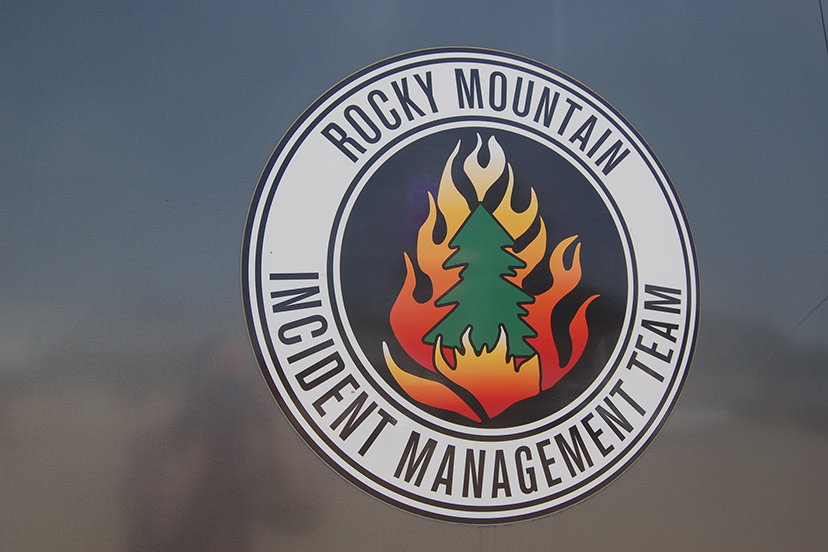Read previous Plumtaw Fire stories, beginning on May 18, here.
Between the afternoon of May 19 and the morning of May 20, the Archuleta County Fairgrounds transitioned from a big, vacant parking lot into a staging area for the numerous professionals working on the Plumtaw Fire.
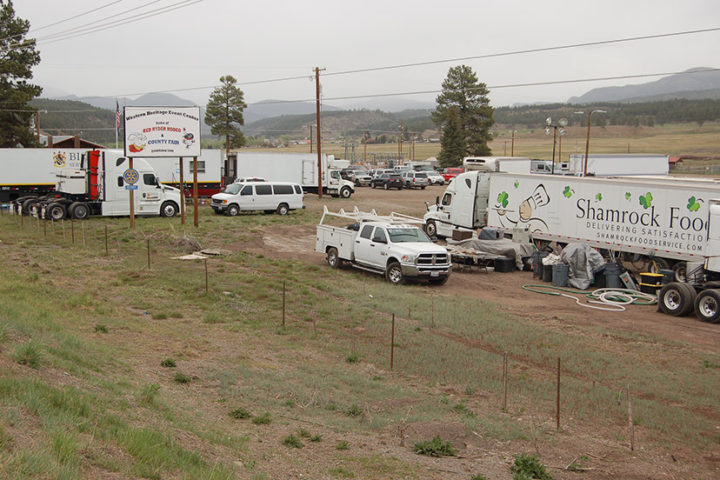
A casual glance at the license plates on the pickup trucks — and yes, nearly all the smaller vehicles were pickup trucks — revealed a selection of Rocky Mountain states. Colorado. Wyoming. New Mexico. South Dakota. Even Oklahoma. Expert firefighters from around the region who’ve arrived, to do what they do best.
The official name of the group heading up the effort is ‘Rocky Mountain Complex Incident Management Team 2’.
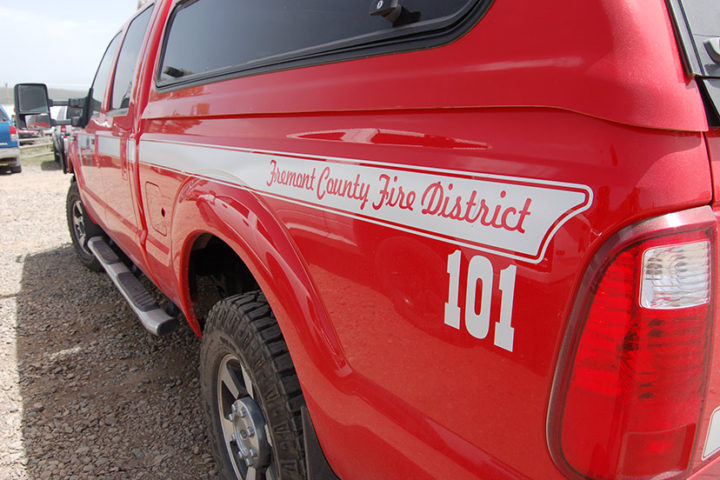
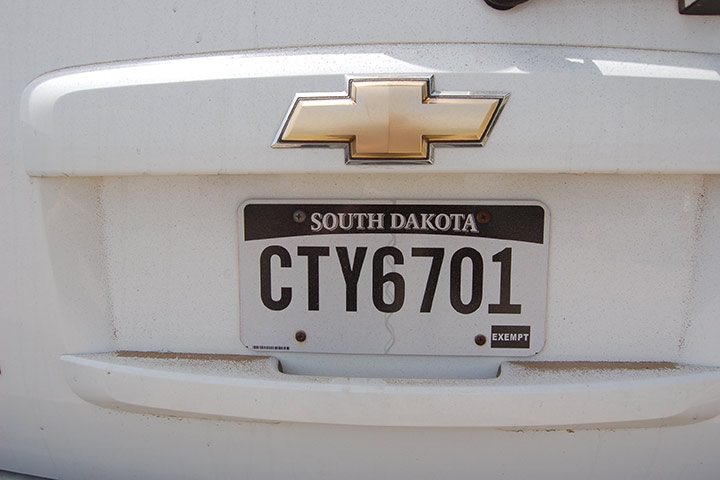

Another change took place between the after noon of May 19 and the morning of May 20. The regular updates on the fire, on Inciweb, Facebook, and the San Juan National Forest, basically stopped being posted. On Saturday morning, May 21, the updates were still referring to conditions on Thursday… no news about whether the fire had grown during the day on Friday, during some high winds.
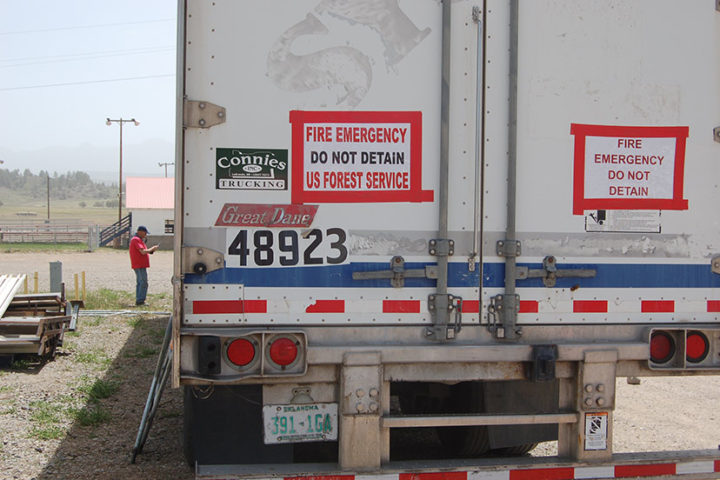
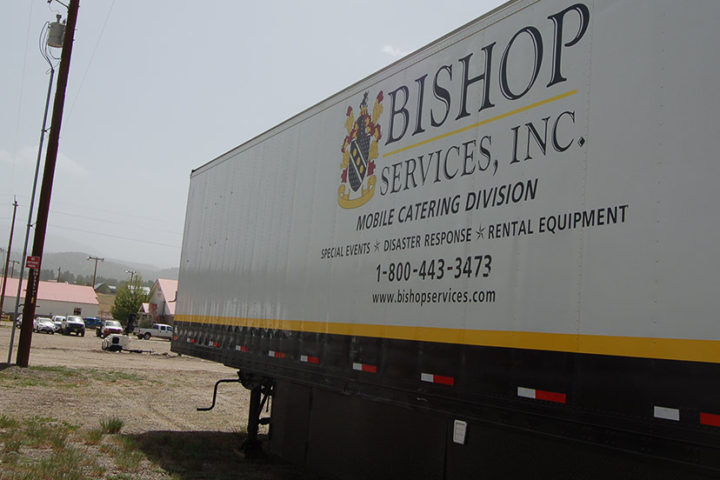
A 6-minute video posted on Friday morning on Facebook featured Chris Zoller, Team 2 Operations Section Chief, presenting a plan for Friday, which included installing hoses, pumps and water tanks, strategically, in the Lost Valley of the San Juans subdivision, in case the fire starts heading north from its (current?) position. Mr. Zoller made it pretty clear that the actions by the local Type 3 team had been effective in slowing the growth of the fire.
But he also reminded us that there are no guarantees in the firefighting business.
Rain and light snow fell over the Plumtaw Fire overnight and into early hours Saturday. An infrared data collecting overflight from Redmond, Oregon, reported cloud cover too thick for the infrared sensing apparatus to work.
As of this morning Saturday, May 21, 2022, 13 crews are listed as assigned to the Plumtaw. The Morning Situation Report indicated 39 additional personnel had joined the incident roster yesterday, bringing the total to 336. Estimated date of containment continues to be listed as July 15.
Cost is said to be in the $2.1 million neighborhood.
Another interesting event took place on Friday morning at the Archuleta County Fairgrounds, while the Type 2 team was arriving — a meeting of the San Juan Headwaters Forest Health Partnership. This group of local forestry experts originally formed in 2010 as the ‘Upper San Juan Mixed Conifer Working Group’ to promote adaptive management of the mixed conifer forests around Pagosa Springs. The group has been facilitated since 2012 by Durango-based Mountain Studies Institute, and has been instrumental in helping find grants and other funding.
For 100 years, the management philosophy at the U.S. Forest Service — and among private lumber companies — has specified that any fires starting in the forest were to be immediately suppressed, if possible. Most folks now involved in forestry seem to feel that fire is a necessary part of long-term forest health, although this philosophy obvious conflicts with the idea that forests exist mainly to provide wood products, wildlife habitat, and recreational opportunities. The new philosophy also clashes with the creation of subdivisions — like, for example, the Lost Valley of the San Juans — that are surrounded by flammable forest fuels. It also clashes with the idea that the air in communities like Pagosa Springs ought to remain free of smoke, to the greatest extent possible.
Of particular interest, at the moment, is the fact that some ‘hazardous fuels treatments’ in the Fourmile Road area were mentioned in a May 18 press release from the Forest Service:
Overnight, the fire backed down to within 150 feet of Fourmile Road (NFSR 645). Firefighters sent a low-intensity fire from the road to meet the oncoming fire to create a buffer, an operation known as a “burn out.” This strategic tool will allow for better visibility during the day and provide opportunities to work off Fourmile Road as a holding line. Hazardous fuels treatments completed in 2021 along the Fourmile Road helped crews hold the fire at that road.
Here’s a map showing the area treated last year along Fourmile Road, directly adjacent to the area now burning in the Plumtaw Fire. The treated road has served, thus far, as a barrier to the fire’s spread.
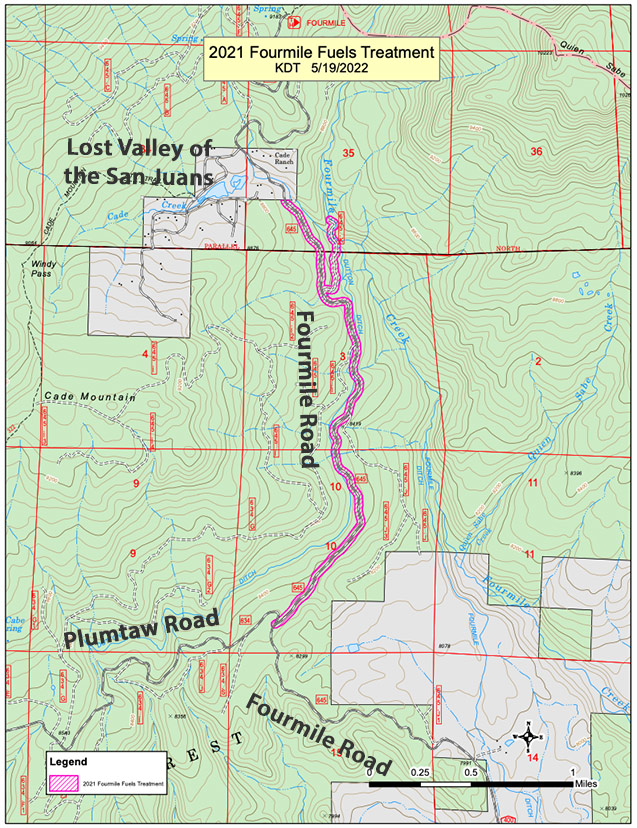
The Fourmile/Plumtaw area was identified back in about 2012 by the Forest Health Partnership as a focal point for experimental treatments, and the fact that the current Plumtaw Fire has not become a ‘catastrophic’ event — that is, consistently burning up into the forest canopy as happened during the 2002 Missionary Ridge Fire — might well be due to those treatments.
A couple of key types of ‘fuels treatments’ have become popular in the American West, among the folks who believe our forests are currently ‘unhealthy’ in terms of catastrophic wildfire threats:
1. Forest thinning through the physical removal of large and small trees and ‘ladder fuels’ — understory shrubbery that can conduct a ground fire up into the upper canopy. This is a time-consuming, labor-intensive tactic and often depends, for its funding, upon profitable use of the removed materials for firewood, lumber, biomass, and compost.
2. Prescribed burns; fire intentionally set in select areas to reduce dangerous fuels and to encourage future wildfires to be ‘less than catastrophic.’ These treatments have also been referred to as ‘controlled burns’… but they occasionally become ‘uncontrolled burns’… as happened when an April 6 prescribed burn near Hermit’s Peak in northern New Mexico spread outside the project boundary and eventually combined with the nearby Calf Canyon Fire to become the largest wildfire in New Mexico history.
The Calf Canyon/Hermit’s Peak Fire has now grown to over 300,000 acres, and is about 40% contained, with no expectation of full containment any time soon. (For comparison, the Plumtaw Fire was at less than 800 acres on Friday morning.)
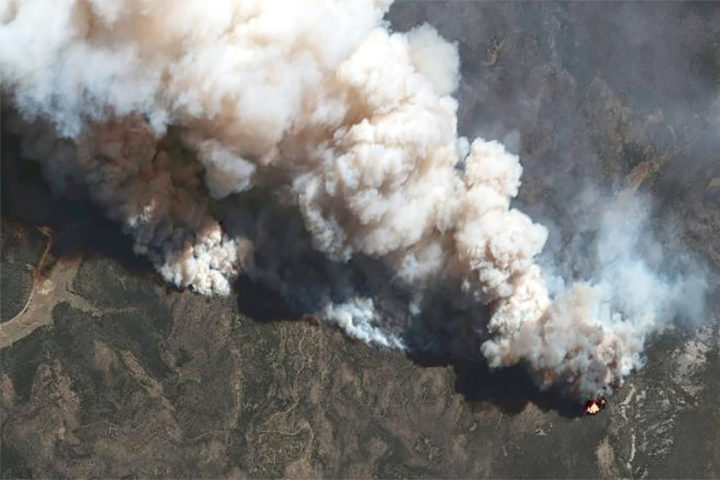
On Friday, U.S. Forest Service Chief Randy Moore announced a temporary nationwide halt to ‘controlled burns’ on all national forest lands. He said his agency will be conducting a 90-day review of policies ahead of planned operations this fall.
“Our primary goal in engaging prescribed fires and wildfires is to ensure the safety of the communities involved. Our employees engaging in prescribed fire operations are part of these communities across the nation,” Moore said in a statement. “The communities we serve, and our employees deserve the very best tools and science supporting them as we continue to navigate toward reducing the risk of severe wildfires in the future.”
New Mexican forests have seen decades of logging bans and fire suppression, but New Mexico Governor Michelle Lujan Grisham nevertheless praised the Forest Service’s decision to hit the pause button on ‘controlled burns’ — noting that, while prescribed burns have their benefits, “it is critical that federal agencies update and modernize these practices in response to a changing climate…”

